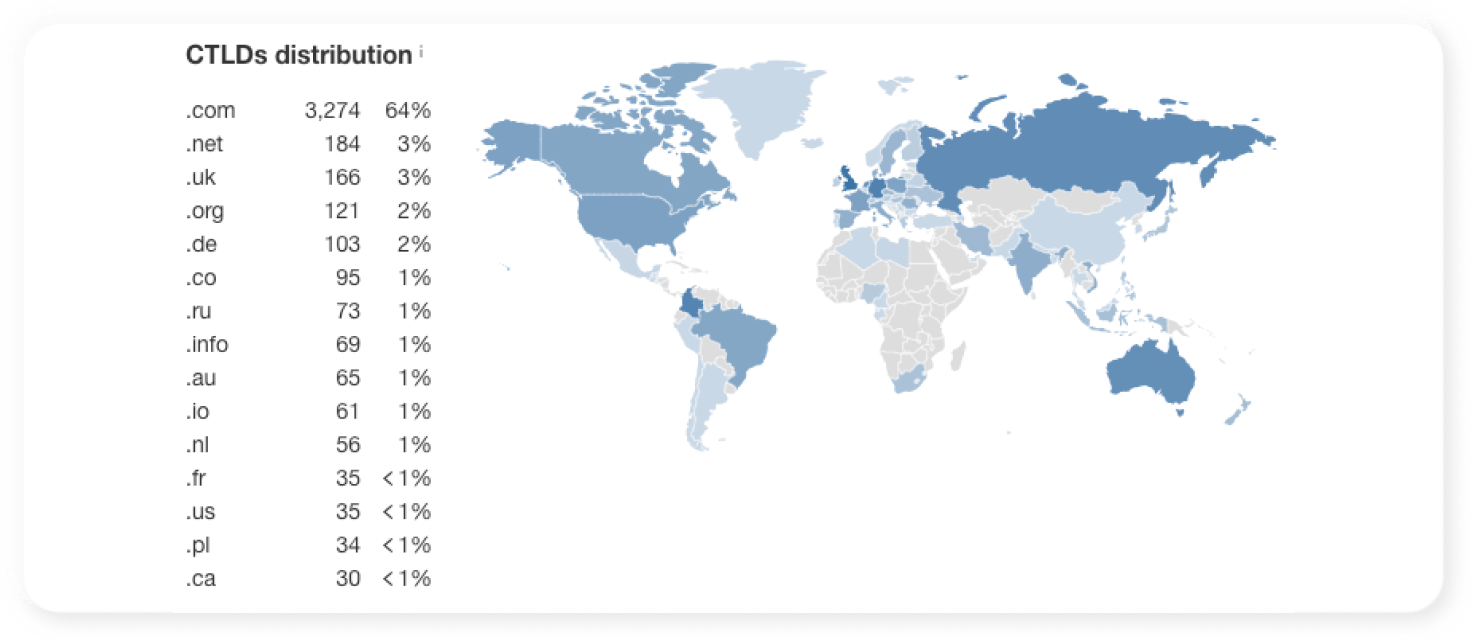When a company faces the challenge of increasing traffic in search engines, the solution usually can be found in two strategies: creating more optimized content and purchasing external links. In this case, some experts overlook an effective trend that can help build traffic several times faster than these classic methods – namely, the creation and promotion of multilingual sites. This can especially be useful for brands that have already peaked in local search engine rankings and have long been unable to reach their desired figures. Have you recognized your own situation here? Then be sure to read this article to the end – you’ll discover new ideas to implement in your search engine optimization strategy.
Table of Contents
6 SEO Trends Everyone Has Heard Of, and One That Is Often Forgotten
Search engines are getting smarter every year, so the rules for working with them are constantly changing. Here are the trends to keep in mind today.
1. Web Design
Website design and performance are becoming even more important. In May 2020, Google revealed new metrics that help its algorithms measure user experience: load speed, interactivity, and visual stability. Along with mobile optimization, security, and lack of intrusive advertising, these factors will largely determine the position of pages in search engine rankings.
2. Search Intent Consistency
As Google search evolves, the quality and volume of content accurately matching a user’s query is increasing.
3. Voice Search
Voice content and optimization for such queries is steadily gaining popularity. According to Google, 27% of the world’s population regularly uses voice search.
4. Video
Users’ mentality and habits are changing. Increasingly, they prefer to watch videos instead of reading text. That’s why Google moves videos from a separate tab to the main search results.
5. EAT Principles
When assessing the quality of content for Google, these principles play a major role, especially in topics related to health, finance, and legislation.
6. Snipplets
Properly structured information allows pages to get to the coveted zero position in the results, which guarantees a noticeable increase in traffic.
You are probably familiar with these trends and are trying to improve in each area. The problem is that the results of such efforts rarely meet expectations.
However, there is one trend with much more potential, and we’ll talk about it below.
Multilingual SEO: What Is the Essence and Who Is Suitable for It?
Globalization has touched most spheres of human life, and to a large extent, thanks to the development of the Internet. Businesses that have gone online may no longer be limited to a single market, especially when it comes to technology companies.
For example, the use of new languages in content marketing and SEO helped Neil Patel to double his traffic in less than a year.

The essence of international search engine optimization is to create content in other languages for the international target audience from different countries.
International SEO is great for:
Information businesses;
IT companies and startups;
SaaS products and online tools;
Ecommerce with international delivery;
Bloggers;
Digital specialists, authors, consultants;
Digital agencies;
News aggregators.
The list can be supplemented. Sometimes even small local companies are interested in ranking in several languages – for example, if their target audience consists of users from different nations.
Multilingual SEO: To Be or Not To Be?
Are you doubting whether to burden your team with additional tasks and start building a multilingual website? Refer to your website’s Google Analytics! According to its results, you will get valuable insights for implementing an international SEO strategy in your niche.
Internal Data
First, study your customers’ needs. Open Google Analytics and see which regions your visitors come from. You can do this by exploring the “Audience” – “Location” tabs.

Analyze not only the location but also the language tab. Google will show you the default language in users’ browsers. Maybe your visitors are already automatically translating your content: there is interest, but the “Google translate” texts do not convince them to come back to you again or buy something.
You can go a step further by conducting a customer survey: find out which language they feel most comfortable speaking. Study the history of orders from other countries.
If the statistics collected clearly hint that people from different countries and speakers of other languages are not indifferent to your company, give international SEO a chance by starting with one language that feels the most promising in terms of business results.
2. External Data
Look around at how competitors and the niche, in general, consider the strategy. Explore websites with similar topics and note if they have language versions and offices in multiple target countries.
Determine which sites in your industry get external links more often. This is something that the Ahrefs tool can help with. The app review has a CTLDs distribution block – this is the distribution of top-level donor domains by country. Among them, you will find the universal .com, .net, .org, etc., but you will be able to get an overall picture of competitors’ language settings and link building strategies.

If your competitors are mastering multilingual SEO strategy, it is better to follow their example: it means that the strategy brings results.
Market Saturation
Do multilingual keyword research and make a list of target keywords that are performing best for your website now, translate them into potentially interesting content language, and estimate the number of queries and issuance. Now it’s important to understand how in-demand and oversaturated your niche is in different languages.
Evaluate the quality of content from the top of SERPs, the number of ad placements, and the loading speed of the sites.
It is no less important to consider the number of external links from the top pages. Here again, Ahrefs will come to the rescue: the fewer external links the competitors’ pages have, the easier it will be to get to the top with search queries through publishing quality expert content on your own site.
Have you already found an appropriate language and target country where your knowledge and experience are very lacking? Excellent, it is better to start with this. And you are lucky if users from that region are already coming to your site. From there, constant testing and analysis of the results will help you choose the right multilingual SEO direction.
Choosing a Good SEO Strategy for Creating a Multilingual Site
So, you like the idea and are ready to implement the change? At first glance, going international seems easy, but the process has many pitfalls. Here’s a step-by-step look at all the things you need to consider when creating your multilingual website.
First, decide if you are going to create a separate site for each specific language or just add the same content versions to an existing site and content strategy.
Depart from the top-level domain (TLD). If your site is .us, .fr, or any other tied to a specific country, it will be pretty tough to break out with it in search queries for multiple countries.
To achieve higher search volumes, make the TLD of your website universal – .com, .org, .net, or similar. Check it on the IANA: website: country code- generic.
What if the main version of your site uses one of the national top level domains?
If your TLD is tied to a country, choose one of the options:
Option #1. Develop separate websites for each language version. This is the most complicated method but potentially the most effective one. Register domains with a different TLD for each country in which you plan to promote your brand (there is no need to change the name). Gradually start placing links to the new domains from the main website to convey their authority. In this case, the content for each site should be approached individually: do not automatically duplicate content and the entire body of information; choose only relevant copy that makes sense for the local audience.

Option #2. Create Subdomains. This option is better to use if your digital marketing strategy considers promoting in the same country but in multiple languages. It is not as radical as creating separate sites but still requires additional resources. Consider the separate semantic core and content on such subdomains different. Links to the main domain should be placed in the footer of the home page with the company data.
Here is the initial URL structure:

What if the current version of your site uses one of the generic top level domains?
If you are the lucky owner of a generic TLD, the following structure options will work for you:
Option 1. Subdirectories.
A simple approach for promotion and implementation. It involves the creation of separate categories within the main site. Of the disadvantages – the structure of the site can become quite cumbersome, and you don’t have as much freedom when creating content for multiple languages. The main perk of such a multilingual SEO strategy is that the link weight is transferred from the main page, and you can safely use the internal linking, which is easy to implement even for a novice webmaster. Just create a separate folder for each of the target languages, as is usually done for a blog or e-commerce store.

Option 2.Subdomains. If you plan to create more than 200 pages for each language, then register subdomains.

Creating separate domains, in this case, is justified only if we are talking about a large company with lots of content for multilingual markets.
Per Country and Per Language Promotion
You can combine these approaches to promote different languages within a single country. For example, register the domain website.us and add subdirectories: website.us/en for English and website.us/es for Spanish.
Such a multilingual SEO strategy will allow you to adapt content to the widest audience possible and provide a comfortable experience for native speakers. However, don’t forget about its labor-intensive nature: make sure it is feasible for your business.
Technical Optimization for a Multilingual Website
Once the multilingual SEO strategy and link structures are defined, you now need to befriend the site with the search engines’ robots. It is important that search algorithms clearly understand the users the site is intended for and how well it is linked to the rest of the content. Here’s a look at the basics; more details can be found in Google help.
Here is the basic technical checklist to make your site in multiple languages shine bright on Google and other search engines.
The Hreflang tag is a basic requirement; this is what Google uses for language targeting. You can generate the right country code with these free services.
Geolocation. Subdomains and subdirectories can be linked to the right locations through the Hreflang tag or settings in Google Webmaster Tools. It is also advisable to contact the developer to set up automatic targeting based on the IP of the user and their native language (based on browser setting info).
Hosting location. This is the least important factor, but if you use separate versions of the site in multiple languages it is recommended to use hosts from the target countries of your promotion.
Sitemap. If you create subdomains or subdirectories, update the sitemap, and add all language versions to it.
Content for Multilingual Sites: Best Practices
A sound strategy and technical optimization is half the battle. The remaining half will depend on the quality of your multilingual content. Consider the main principles to focus on while preparing content in foreign languages.
The worst thing you can do with the texts on your site for international audiences is to make them read like automatically translated content. The proper translation projects should be orchestrated as localization by qualified professionals whose native language and local culture belong to your site’s target audience.
If you have previously done keyword research for different countries, you probably realized that the same page, but in different regions, may vary drastically in search terms.
For example, Spaniards and Mexicans search and think in different ways despite the fact that they speak the same language. Check out the video created by our editor from Madrid – Estefania Velasco:
That’s why at Contenteam, we always work with native-speaking writers and editors when providing keyword research and creating texts for GEO-based organic search and multilingual content projects. Only native speakers are fully able to determine whether or not the material will work for the proper target audience marketing-wise.
Pro Tip: If your marketing budget is strictly limited, you can have the landing page and blog content translated and sent to a native speaker for additional proofreading.
Remember, using the same text translation for various target GEOs is highly undesirable. The most cost-efficient way for website owners to generate more traffic from new regions is to create unique content and alternate URLs. This strategy will require more time and resources but will increase search volume performance through high-quality localization.
Contenteam’s editorial crew has been writing brilliant texts in foreign languages for 8 years. We will be glad to assist you in creating a profound multilingual content project, whatever approach you choose to develop your business.
Contact us today!
















